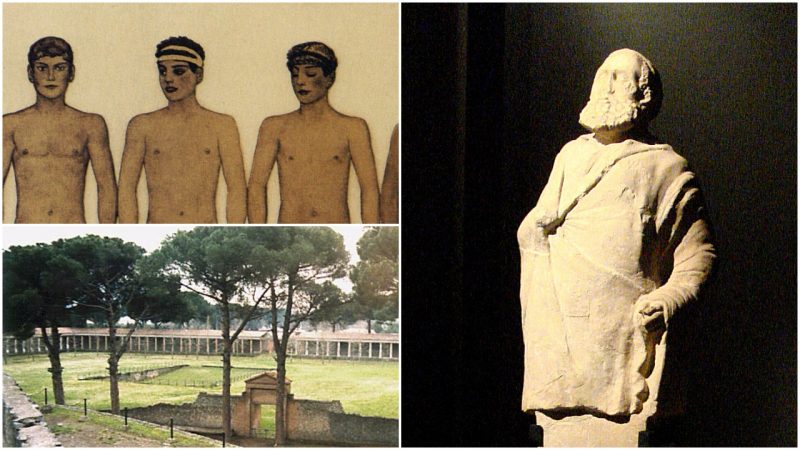These days we often hear about “body acceptance,” “body positivity,” and “fat shaming”–expressions that reflect the current perception of the human body and its limits. Historical records have shown that each era favors specific body standards. Undoubtedly, our bodies mirror our well being. But in addition, they often display dominant social attitudes toward sexuality, gender, and a certain moral code. Today people nurture an obsession with a so-called wellness lifestyle that puts a young, toned body at the top of the priority list. Gluten-free diets, green smoothies, yoga, and SoulCycle–you name it!
However, if we go back in time, we’ll see that even our ancestors liked to hit the gym, though for different reasons than obtaining the perfect beach body.
According to Eric Chaline, the author of The Temple of Perfection: A History of the Gym, throughout history, the gym has been “a place that assembled the artistic and the political, the enlightened and the reactionary, touching on many areas of life, culture, and society.” As a tribute to the gods, the Ancient Greeks used to go to the gym naked, a notion integrated into the semantics of the word “gymnasium” that translates as “school for naked exercise,” which, reportedly, resembled an outdoor athletic field.
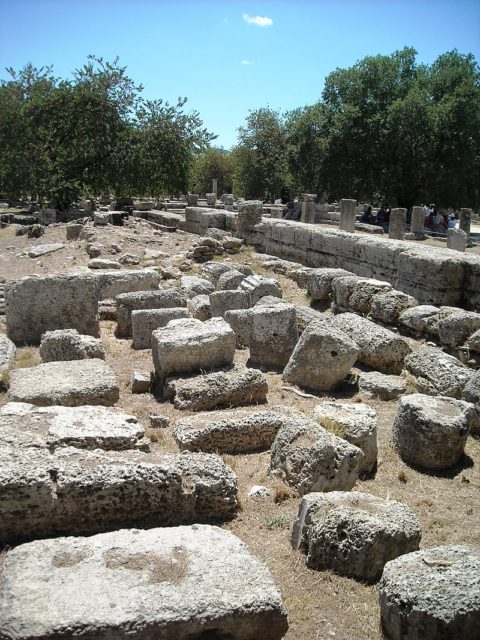
Narcissus and his fellow ancient Greeks admired the naked male body, which they perfected by practicing competitive sports or exercising in gyms. The Romans, on the other hand, were a bit skeptical of obsessing over the body and its physical pleasures. In the Middle Ages, the body was feared as a well-spring of immoral pleasures that had to be kept in the dark, and those who gloried in their physiques received a tongue lashing. When the Renaissance commenced, artists brought the nude back in the game, combining it with pagan elements and Christian motifs. The result? Botticelli’s Birth of Venus and Michelangelo’s David, masterpieces that praised physical beauty as a symbol of divinity. Nowadays, it can be said that people have returned to the classical Greek model of body observance, making gyms socially necessary venues were people go to meet with friends or even find someone to date.

The concept of a place that established exclusively for exercise was actually launched in the 16th century, when Renaissance artists and physicians recognized the benefits of exercise–it provided an attractive figure and promoted a balance in health. Despite this, the idea that body shape could be changed wasn’t present until humanity’s attitude toward embodiment was altered during the Enlightenment. This period underlined the importance of physical education and the enjoyment of one’s own body.
The gym saga continues with Napoleon’s defeat of Prussia, which provoked Friedrich Jahn to create the turnplatz, the first institution of physical exercise that would train the united citizen army of Germany. The turnplaz was an open-air venue that set the foundations for artistic gymnastics, equipped with rings, high bars, ladders, climbing masts, and other facilities for various field sports. The place was open for all the social classes, and its practitioners were called turners. Two of Jahn’s students who emigrated in America during the 1820s set up the first collegiate gymnasium, but it was soon closed.
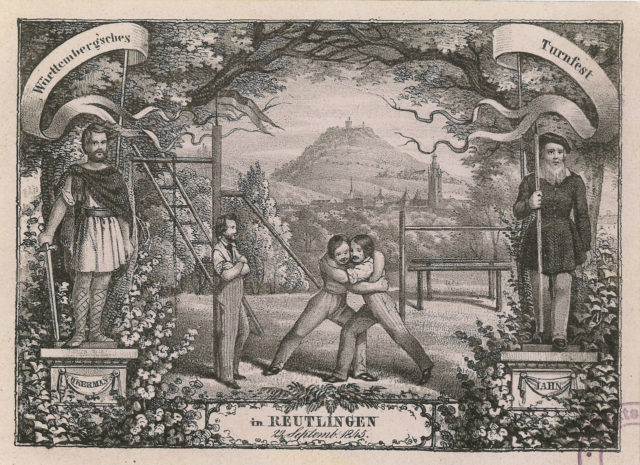
During the 19th century, and the period of rapid industrialization and urbanization of Western Europe, the affluent Victorians with time for leisure paid much attention to physical self-improvement as a sign of good life quality. The world’s first commercial gym was Hippolyte Triat’s Grand Gymnase, established in 1849 in France. The first chain of branded gyms, Shadow’s Institutes of Physical Culture, opened in the United Kingdom in 1897.
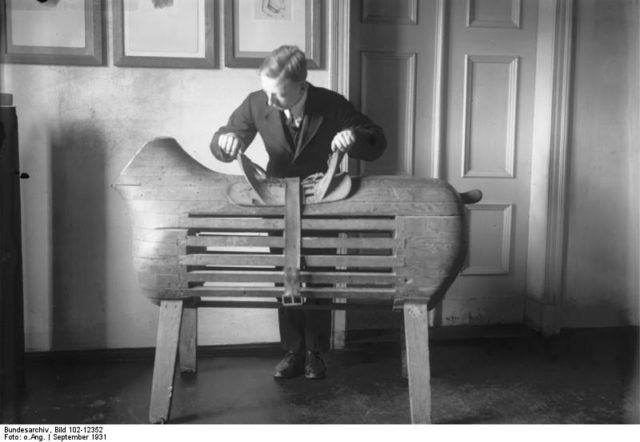
As time went by, Europe’s middle class manifested a growing demand for physical fitness, which was once maintained primarily by the members of the upper social class. Both Shadow and Triat used this notion to popularize the “Grecian ideal” of a healthy, attractive body, promoting it with still photography as well as providing standardized equipment for their gyms. Shadow was quite influential in America, which he toured with his carefully selected representatives of health, fitness, and weight training.
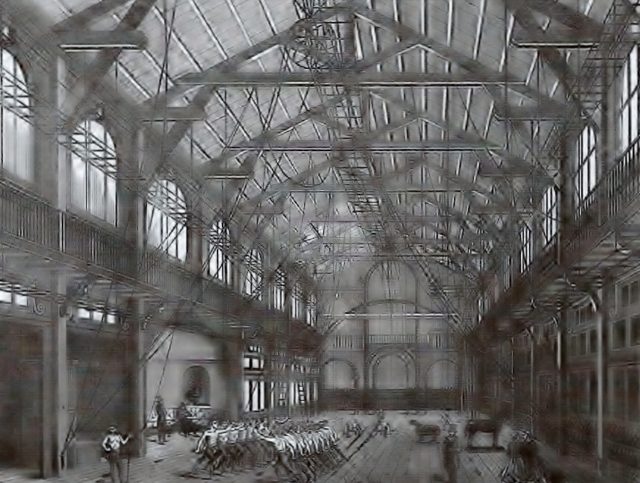
By the end of the 19th century, there were elite collegiate gyms and even exclusive leisure centers for exercising. The working class began to join the trend, going to fitness centers that promoted religion and physical exercise known as “Muscular Christianity.” However, the establishing of the gym as a mainstream activity took place in the mid-20th century with the blend of Californian hedonism, Hollywood stardom, and bodybuilding competitions. In 1934, in the city of Santa Monica, the Muscle Beach was opened–a seaside facility that provided for gymnasts and athletes. Among its regular visitors were Abbye “Pudgy” Stockton, the “Barbelle” of Santa Monica, who later opened a ladies gym in L.A., and Steve Reeves, who won the titles Mr. America and Mr. Universe.
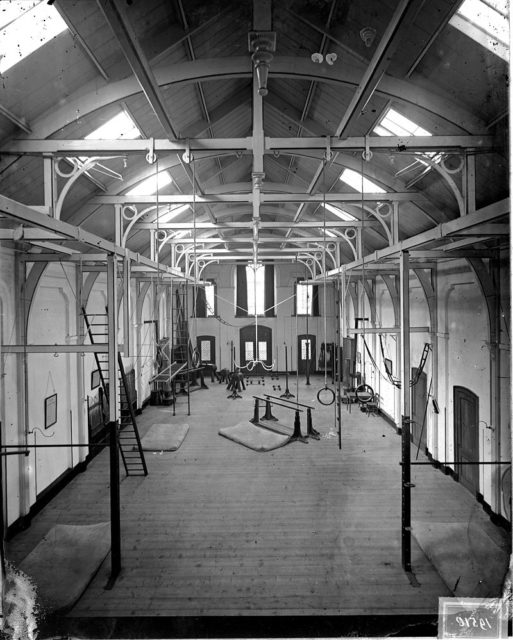
In the 1950s American gyms went corporate, while the 1970s were highlighted by the separate fitness goals of men and women. Men were mainly focused on muscle building, while women engaged in the “Aerobics Revolution” of Jane Fonda and other fitness gurus, popularized through bestsellers and videos in the following decade.
The post-Fonda fitness period brought us the gym as we know it today: a wellness empire of the consumer society and an assured business model that has been installed almost everywhere in the world.
